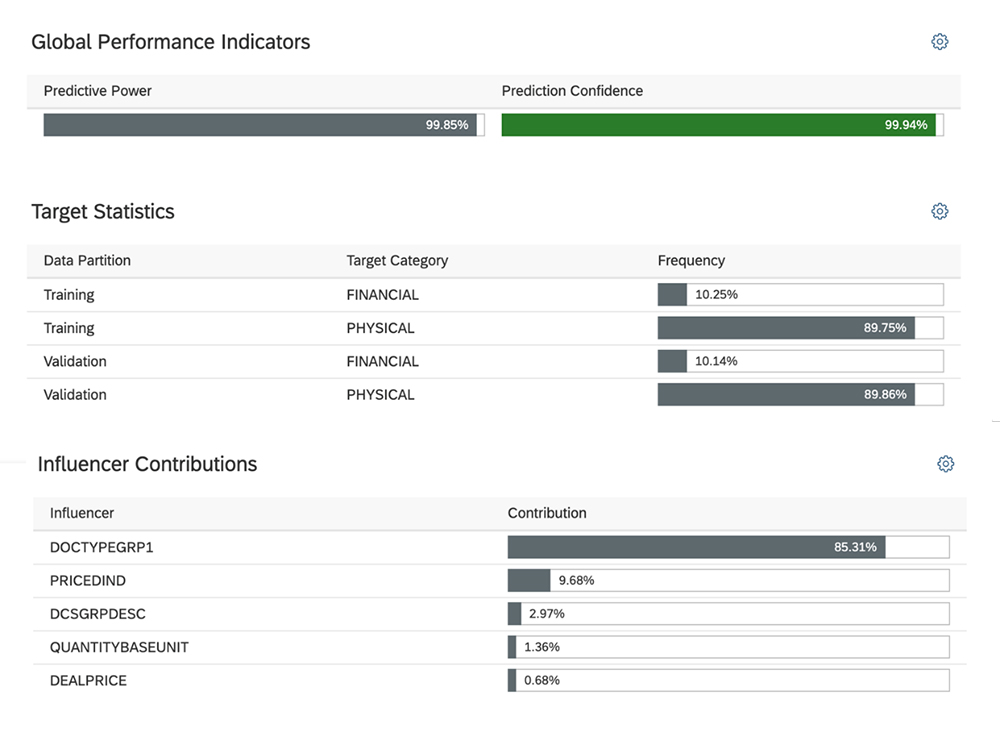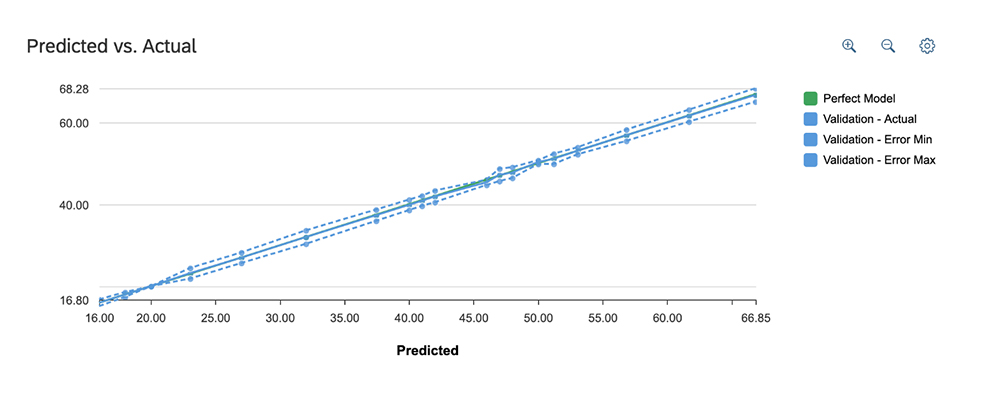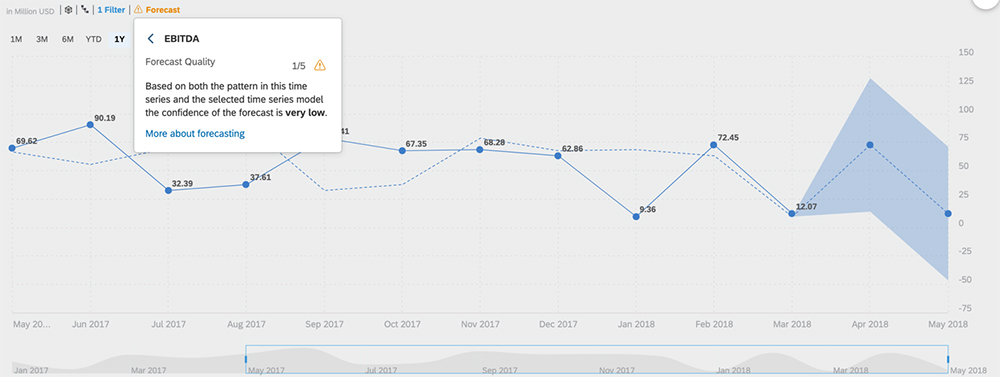Using Predictive Models to Prepare for the Future
How SAP Analytics Cloud Can Help Organizations Navigate Uncertainty During the COVID-19 Pandemic
by Rajat Agrawal, Platinum Consultant, SAP America, and Uday Guntupalli, Senior Consultant, SAP America
An uncertain future in business is cause for concern, but being ill-equipped for such scenarios is a much bigger concern. For decades, most companies have operated with manual forecasting or basic models based on historical analysis. However, when operating conditions shift or worsen and businesses are hit by an unforeseen event of high magnitude, traditional models simply collapse.
No amount of forecasting or robust analytics could have helped businesses anticipate an event such as COVID-19. This pandemic has brought the world to a grinding halt at an unprecedented speed. Businesses are suffering, and the full impact is still unclear. Countless business leaders and employees wake up daily uncertain of how long the situation will last and what the aftereffects might be. They find themselves lacking tools to help them navigate the path ahead during and after this crisis.
Explore related questions
A common sentiment these days is that the world’s most valuable resource has shifted from oil to data, yet many companies haven’t even scratched the surface of leveraging their data to help drive their planning. Even with concerns about preparing for the future looming large, machine learning and predictive analytics remain farfetched ideas to many businesses. In addition, while data is a crucial resource for every industry these days, mishandled and misused data is more of a risk than a benefit, making many organizations hesitant to use it.
The adoption rate for advanced analytics is less than 20% globally. Vast amounts of historical data, an intangible asset, have been largely overlooked. For many companies, the fear that they are not equipped to implement machine learning — based on doubts that their current IT infrastructure is ready, a lack of data scientists, and worries about change management, for example — drives their decision to hold off on adopting these technologies. A common concern is that, once implemented, the organization will lack the skillset needed to turn the resulting predictive numbers into prescriptive actions.
Many leadership teams find it difficult to come up with a business case for these types of technologies because they cannot quantify the return on investment, and they struggle to overcome resistance to change. SAP Analytics Cloud is built to address these legitimate concerns and fears among executives. It aims to provide multiple analytics capabilities within a single product that focuses on leveraging intelligent technology to help solve business problems, rather than serving as a tool used by data scientists to focus on statistical usage. In addition, it is the only tool in the market that combines business intelligence, planning, and predictive analytics.
What Is SAP Analytics Cloud?
SAP Analytics Cloud is a cloud-based solution meant for a business at any stage of its digital transformation. It is built to seamlessly work with various architecture frameworks and allows the user to operate with live or imported data capabilities. SAP Analytics Cloud has the ability to integrate with R and other open sources for data visualization.
Figure 1 illustrates some of the different reporting capabilities provided by SAP Analytics Cloud — a list that is continuously evolving. The native cloud solution allows for seamless product updates and gives the business access to the newest technology and features as the tool evolves.

Figure 1 — Standard features of SAP Analytics Cloud
At its core, SAP Analytics Cloud is a planning and business intelligence tool designed to allow users to interact with appealing visualizations and drill down to the most detailed information. This strong foundation allowed SAP to further evolve the tool into a hub for machine learning and advanced analytics.
The machine learning technology included with SAP Analytics Cloud leverages cross-organizational data to help enable intelligent decision making. It eliminates human bias, isolates decision making from organizations’ processes, and drives the focus toward optimization and innovation. The Smart Predict feature allows for out-of-the-box usage of supervised machine learning algorithms — such as classification, regression, and time series — to enable users to practice advanced analytics based on business requirements rather than statistical proficiency.
Classification, regression, and time-series algorithms are used to answer different business questions. Classification helps group a set of data into different classes. For example, an email spam filter uses classification algorithms to determine whether a new email goes to a user’s inbox or spam folder. In this example, the algorithm learns from labeled data and patterns in the emails to deem which class a new email falls into.
A timely example is online banking, where customer behavior is being reassessed in view of COVID-19. A customer’s recent transactions and online activity are analyzed and classified to generate new business leads, and to help create suitable financial products based on changing needs.
Regression algorithms seek to predict numeric data instead of labels — for example, if a business wants to re-predict the salary demands of a new hire during COVID-19 based on factors such as experience, location, and unemployment rates.
Once a business has identified a problem to solve and chosen the data to train the predictive model, SAP Analytics Cloud provides a model debrief screen to help determine whether to move forward with applying this model or retrain with a different set of parameters.
Figure 2 illustrates what a successful prediction can look like. The model debrief shows the predictive power and confidence in the model’s prediction, as well as the biggest contributors to this prediction.

Figure 2 — Predictive modeling debrief screen
Figure 3 takes the validation of a regression prediction and compares it to the actual as well as the error minimum and maximum ranges. This allows the machine learning model to substantiate itself based on a floor and ceiling to help determine the most accurate prediction.

Figure 3 — Prediction versus actual validation
Time-series scenarios also help numeric forecasts such as regression modeling, but based on fluctuations over time according to internal and external variables. For example, a time-series predictive model can be employed to predict a company’s future earnings based on historical financial data over time. This data — combined with sales team activities, new employee hires, and environmental and societal factors, such as weather or pandemics — can be leveraged to help identify trends and create the most accurate prediction.
Figure 4 shows how the time series prediction built into SAP Analytics Cloud helps forecast for the number of forward periods desired and how the system innately judges the forecast. As you can see, SAP Analytics Cloud displays warnings to let the user know that the system is not happy with the forecast quality, and tells the user that the confidence with this forecast is very low.

Figure 4 — Example of a time-series forecast in SAP Analytics Cloud with system-driven forecast quality checks
It also allows the user to request assistance from SAP Analytics Cloud to help drive the model to a version where the forecast is built with the most confidence, allowing the user to trust the prediction to take action.
SAP Analytics Cloud takes it a step further with its Smart Discovery feature, which allows the solution to explore and learn from your data to uncover valuable insights that can slip past even an experienced eye. The solution also allows users to run and simulate multiple “what-if” scenarios to help optimize planning.
Predicting Human Behavior During Times of Mass Fear
An example of an industry severely impacted by COVID-19 is the airline industry. Sealing of international borders and reduced domestic traffic has resulted in the grounding of most aircrafts. Even when the travel restrictions are lifted, fear around contracting the virus will likely continue to make passengers wary of air travel. It will take time for the industry to get back to what it was prior to the outbreak, but there is still room to optimize and make the best of the situation. Some of the key drivers in this decisionmaking process will be the flight routes to focus on, the pricing strategy, and the emphasis on retaining existing customers.
Historical data going back to the recession of 2007- 2009, or even further back to September 11, 2001, can help provide insights into airline passenger behavior during times of mass fear. The time-series modeling of SAP Analytics Cloud can be used to help predict operational volume and earnings for the next few periods based on this historical data and external market trend data. Furthermore, cross-organizational data can be leveraged by the solution’s regression models to help plan pricing strategies, and by its classification models to target existing customers with the right marketing.
Department stores are another industry facing challenges during the COVID-19 crisis. A problem that started with supply chain disruptions and product delays is worsening as social distancing causes the temporary closure of stores. The uncertainty around the economy and recommendations to limit social interactions are further affecting stores as users are either pushing buying decisions to online stores or avoiding buying altogether. During these times, loyalty to brands and stores disappears — customers experiment with new means and these experiences will shape their future buying behavior.
During the COVID-19 crisis, the focus must be on existing customers as increasing customer retention rates by a mere 5% has proven to increase profits by more than 25%. The classification model of SAP Analytics Cloud can be deployed to leverage a company’s historical data to identify risks of customer churn. This allows for targeted marketing to these customers and helps preserve and improve existing relationships. The solution’s predictive analytics can also help automate and adapt to shifting operational and demand planning needs that arise with mass disruptions in the market. Balancing product assortment is key to engaging customers and generating in-store foot traffic.
The regression modeling of SAP Analytics Cloud can further help predict the necessary pricing and distribution strategy to minimize any need for markdowns and allow for the most optimized supply and demand planning.
The airline and department store scenarios reveal a common underlying challenge faced by businesses of any size: how to make decisions efficiently and effectively, particularly in turbulent times where they are stretched and challenged for survival, as is the case with the COVID-19 crisis. SAP Analytics Cloud can help businesses meet this challenge, and return their focus to innovation and optimization rather than repetition and the manual planning of tasks. In addition, as a cloud-based solution, SAP Analytics Cloud has no architectural prerequisites that limit its productive use, which helps streamline the transition from traditional to predictive analytics.
Businesses seeking to successfully meet today’s challenges are ready for advanced analytics to help drive their actions, and SAP Analytics Cloud empowers them to do this in a simple and efficient way. By leveraging SAP Analytics Cloud, organizations can focus on innovation and advancement while machine learning helps drive planning and decision making.

Rajat Agrawal is a platinum consultant at SAP America. He has extensive experience in oil & gas and agriculture industry solution portfolio. Rajat has worked very closely on commodity management & risk analytics leveraging SAP HANA, which is one of SAP’s current strategic investments.
Rajat has knowledge of various SAP modules and business processes spanning CPG, chemical and oil field services industry along with SAP IS Oil and Agricultural Contract Management solution. Rajat has 18 years of SAP experience which includes co-innovation with customer, greenfield, upgrade and business transformation projects in US, Europe and India largely on fortune 100 companies.

Uday Guntupalli, a senior consultant at SAP America, has been a multi-year SAP catalyst and has had the opportunity to lead SAP TechEd lectures on predictive analytics and machine learning, as well as leading multiple lectures and trainings on risk analytics with SAP HANA and SAP Analytics Cloud.
Uday’s SAP experience spans 5 years with a special focus in the oil & gas industry. He also has experience in the utilities and manufacturing space focused on analytics and supply chain operations. Uday has helped multiple fortune 100 companies with innovation and to build new solutions as well as greenfield and business transformation projects.








